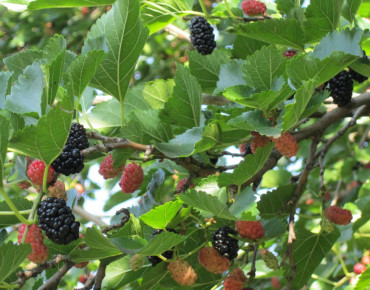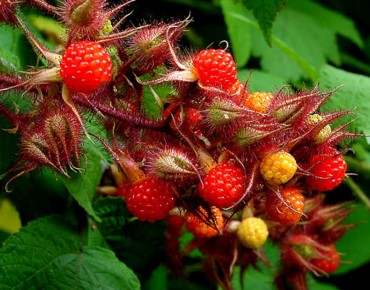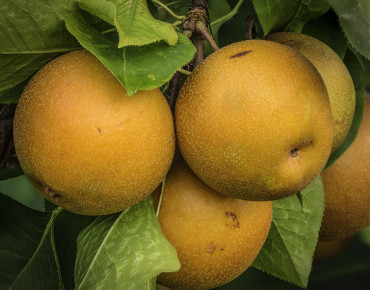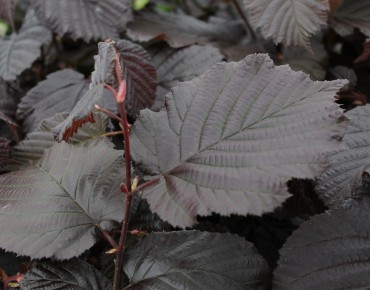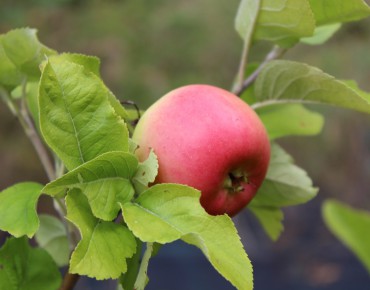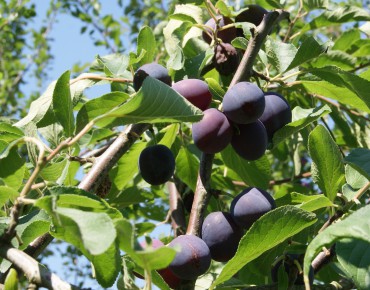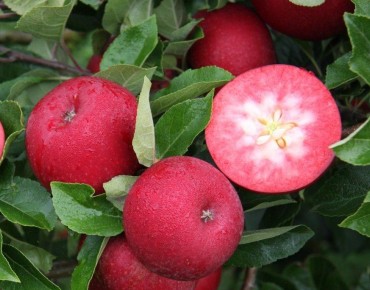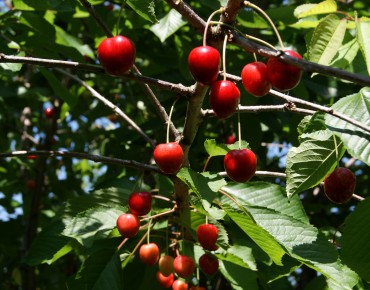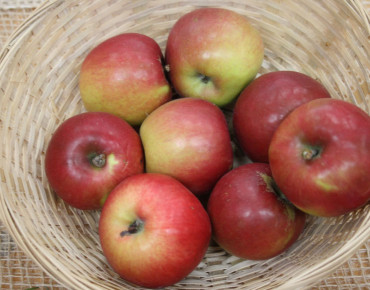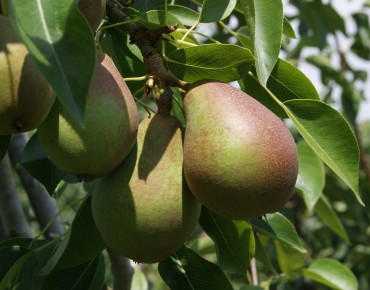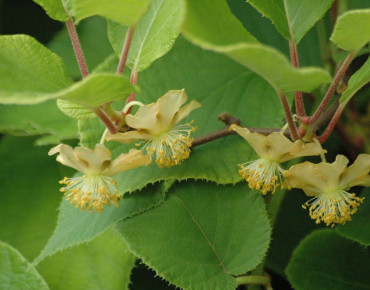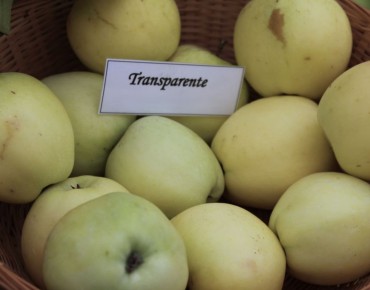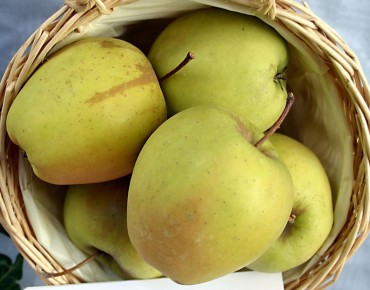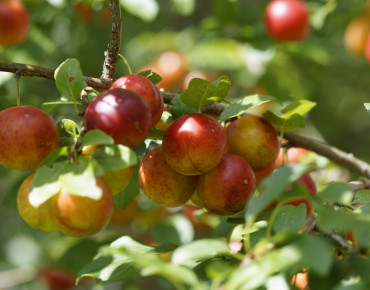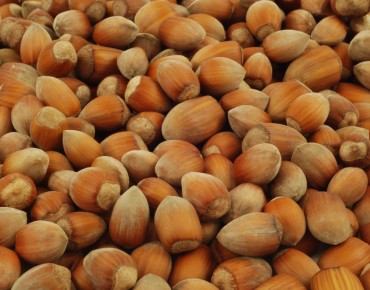Durondeau Pear Tree
Pyrus communis Durondeau
Description
Durondeau Pear Tree – Pyrus communis ‘Durondeau’
Main interest of the plant
The Durondeau pear tree is a traditional Belgian variety, prized for its large, juicy fruits with a refined, slightly spicy flavor. Its firm, subtly grainy flesh offers a delicate texture that’s best enjoyed when the fruit is just ripe—before it becomes mealy. This variety is partially self-fertile, but performs better when pollinated by other varieties in flowering group 4. Strong, reliable, and cold-hardy, the Durondeau is a favourite among lovers of high-quality fruit.
Origin and characteristics
Origin: Belgium, selected around 1811 by Charles Louis Durondeau (Tongre-Notre-Dame)
Family: Rosaceae
Type: Deciduous fruit tree with semi-upright growth
Grafted on: quince Adams
Botanical description
- Mature height: 3–4 m (as low-stem form)
- Spread: 2.5–3.5 m
- Habit: Open canopy, slightly arching with age
- Leaves: Oval, medium green, deciduous
- Growth: Moderate to vigorous
- Hardiness: Excellent (down to –20 °C)
Flowering and fruit
- Flowering: April (group 4)
- Self-fertility: Partially self-fertile
- Good pollinators:Beurré Hardy, Légipont, Beurré Superfin, Calebasse à la Reine, Bon-Chrétien Williams, Conference
- Fruits: Large, rough skin, greenish-yellow with a red blush on sun-exposed side
- Flesh: Cream-white, juicy, fine-grained, sweet-acid balance, musky aroma
- Flavor: Complex and aromatic, best consumed when barely ripe
- Harvest: Early to mid-September
- Storage: Until late October in a cool cellar, or up to 2 months refrigerated
Partially self-fertile,
It is pollinated by: Beurré Hardy, Légipont, Beurré Superfin, Calebasse à la Reine, Bon-Chrétien Williams, Conférence, Précoce Henin, Ananas de Courtrai, Beurré Lebrun, Beurré de Naghin, Triomphe de Vienne, Seigneur Esperen, Beurré d'Hardenpont.
It pollinates the following varieties: Précoce Henin, Ananas de Courtrai, Double Philippe, Beurré Lebrun, Duchesse d'Angoulême, Beurré de Naghin, Bon-Chrétien Williams, Calebasse à la Reine, Triomphe de Vienne, Seigneur Esperen, Beurré Superfin, Conférence, Beurré Hardy, William's Duchess, Légipont, Saint Remy, Beurré d'Hardenpont
Light and soil
- Exposure: Full sun
- Soil: Deep, fertile, well-drained
- pH: Neutral to slightly alkaline
- Note: Avoid heavy or waterlogged soils
Planting
- Period: October to March (frost-free), or year-round in containers
- Tips:
- Loosen soil to 50 cm depth
- Mix in compost and organic fertilizer
- Stake the young tree (for low-stem forms)
- Water generously, mulch base
- Spacing: 4–5 m between trees
Watering
- Young trees: Water regularly in dry periods
- Established: Fair drought tolerance once well-rooted
Pruning
- Formative pruning: In winter for first 3 years
- Maintenance: Light pruning in February to improve light and airflow
- Tip: Remove dead or crossing wood, shorten vertical shoots
Propagation
- Method: Grafting onto rootstock
- Note: Not true to type from seed
Use in the garden
- Ideal for family orchards, espalier or standalone planting
- Suitable for edible hedges or mixed fruit borders
- Pairs well with flowering plants or vegetables
Fruit use and quality
- Best enjoyed fresh, just before full ripeness
- Suitable for compotes, poached pears, jams
- Short shelf-life once ripe – consume within 1–2 weeks
Pests and diseases
- Moderate scab sensitivity: Preventive copper spraying in spring
- Risks: Fire blight, canker – avoid summer pruning injuries
- Natural control: Horsetail decoction, avoid nitrogen excess
Tips for success
- Plant in a sheltered, airy location
- Combine with pollinator varieties
- Encourage biodiversity and mulch base regularly
The Durondeau pear tree is a gem of Belgian heritage. With its refined taste, cold tolerance, and generous fruiting, it’s an ideal choice for orchard enthusiasts and gourmet gardeners alike.
Features
- Common name : Durondeau Pear Tree
- Family : Rosaceae
- Category : grafted low stem fruit tree
- Spread : 2.5 to 3.5 m
- Foliage : deciduous
- Color of flowers : white
- Fruit : Large size, rough, yellowish-green skin tinged with red on the side, white flesh, fine, juicy, sweet with a touch of acidity
- Harvest : Early to mid-September
- Use : isolated - orchard
- Soil : neutral
- Habit : pyramidal
- Enemies : aphids - caterpillars
- Possible diseases : Scab
- rootstock : Cydonia Oblonga K.Adams
- Pollinator : Beurré Hardy, Légipont, Beurré Superfin, Calebasse à la Reine, Bon-Chrétien Williams, Conférence ...
Expédition & livraison
How does the delivery work?
 As soon as you place your order your plants are selected
As soon as you place your order your plants are selected Each order is processed individually.
Each order is processed individually. Plants are packed, staked and labeled.
Plants are packed, staked and labeled. Packaging is carefully implemented to avoid any problems.
Packaging is carefully implemented to avoid any problems. Packages are ready to be shipped.
Packages are ready to be shipped.
Our delivery methods
Shipping of our plants throughout Europe (except overseas and islands).
Customer reviews








